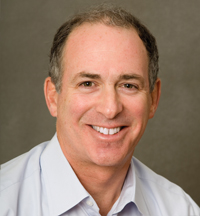

Bullyproof Your Child
for Life
Anti-Bullying Resource Library - Respect U.
Reprinted from
The New York Times
New York Region
June 28, 2004
Summer Camps Focus on Ending Rule of Bullies
By JANE GROSS
WEST COPAKE, N.Y., June 24 � Camp Pontiac's 540 campers were still at home, eagerly anticipating Monday's reunion with friends from summers past or queasy at what might await them as first-timers in the spiffy red and white cabins here.
But their counselors, midway through a weeklong orientation, were way ahead of them, learning from a visiting psychologist how to handle an encounter between a popular, domineering repeat camper and a trembling newcomer. This is the quintessential bullying scenario, and bullying prevention is this summer's hot topic at America's sleep-away camps � more popular than disaster planning, watercraft safety and dealing with homesickness.
Seasoned counselors know that camp, the summer home to 10 million of the nation's children and the adults supervising them, can be a breeding ground for bullies if the grownups let them have their way.
So they listened intently to this typical situation: An 11-year-old girl, new to camp, is encouraged to e-mail a bunkmate before the start of camp to get acquainted. The longtime camper, like a character in the movie "Mean Girls," sends back a vicious message: "I'm the boss of this camp, and if I don't like you, you're in trouble."
Rachel Degler and Jon Martinez, both 21-year-old returning counselors at Pontiac � in the foothills of the Berkshire Mountains, about 100 miles north of New York City � played out the story line along with Kris Fucillo, a 20-year-old first-timer, and then made suggestions for remedies.
Put her in touch with other, nicer girls. Contact the bully's parents, with a record of the e-mail exchange in case they say, "My child? No way!" Demand an apology from the offender and a signed contract about future behavior. Put the girls in different bunks.
The visiting psychologist, Dr. Joel Haber, and one of Pontiac's owners, Dr. Kenny Etra, a Long Island physician, nodded approvingly at the ideas. Their mission was to teach the counselors to recognize potential bullies and victims, and defuse the behavior if they could or bring it to the attention of their superiors if they could not.
"We can do a better job of creating an environment that isn't `Lord of the Flies,' " Dr. Haber said. Calling himself the Bully Coach, Dr. Haber has found a ready audience at camps in the Berkshires, the Catskills and the Poconos, where antibullying training is "very `in' now," according to Dr. Etra, who owns Camp Pontiac along with his twin brother, Ricky, also a physician on Long Island.
Camp directors are motivated by a stew of reasons, including increased consciousness of bullying's long-lasting impact and bottom-line issues like camper retention and fear of litigation. Dr. Haber said that most of the dozen camps that have hired him this year, for fees ranging from $500 to $1900, cited camper retention as the main reason, since bullied children rarely return.
At places like Pontiac, it is no longer O.K. to call someone "pizza face" or to run a bunkmate's underwear up the flagpole, once summer rituals as entrenched as color war or general swim. Short-sheeting a bed? Not if the joke is played on a shy first-time camper, alone among lifelong friends. Cliques once considered age-appropriate are now considered cruel. And cruelty is not considered character-building.
"In our culture, there used to be a belief that this was just the way it is," said Larry Dieringer, executive director of Educators for Social Responsibility, a group devoted to social and emotional education for children. "Columbine changed all that."
Preventing bullying became a national preoccupation after the 1999 shootings at Columbine High School near Littleton, Colo., where two misfit teenagers killed 12 fellow students and one teacher and then turned their weapons on themselves. With child development experts in agreement that sustained bullying increases the risk of homicide and suicide and that even garden-variety mistreatment undermines children's mental health, educators decided that the stakes were too high to let victimized youngsters fend for themselves.
The antibullying movement came more slowly to camps than to classrooms, according to Marla Coleman, president of the American Camping Association, which has 7,000 member camps. Even now, some incorporate it only fleetingly in staff orientation, then let summer take its usual Darwinian course. But more camps, which generally open today in the Northeast, are teaching prevention and intervention to its young counselors in a sustained, intentional way, Ms. Coleman and other camping experts said.
Exporting school programs to camps is welcome and overdue, said Frank C. Sacco, one of several researchers called upon as consultants by the F.B.I. after the Columbine shootings. Dr. Sacco said sleep-away camps could be either "social war zones" or the ideal place for a culture change because of the intense experience of living together, under round-the-clock adult supervision, for an extended time.
Many camp directors bring in a well-known trainer, like Bob Ditter, a Boston social worker, to discuss common problems of contemporary childhood, including eating disorders, divorce and psychiatric medication. Dr. Ditter has been on the summer camp circuit since 1982, charging $1,600 to $2,200 for a full-day presentation. In the past few years, as bullying became a hot topic, Dr. Ditter has expanded that part of his presentation, he said.
Other camp directors, including Ms. Coleman, who owns Camp Echo, in the Catskills in Burlingham, N.Y., use a multimedia curriculum that is built around songs, rituals and role-playing activities. The program, named for the song "Don't Laugh at Me," has an activity guide, a music CD and a video that have been donated to 2,500 camps in the last few years, including Camp Echo.
Ms. Coleman said she did not know how many were actually using it, but for the first time a training session will be part of next winter's national conference of camp directors.
Dr. Haber has trademarked his title as the Bully Coach, but he goes beyond gimmicks, teaching counselors the key role of the bystander, the different bullying styles of boys and girls, and how to distinguish between tattling and reporting incidents of bullying, which rarely take place in view of adults.
The 185 Pontiac counselors, most of them former campers, needed little explanation of how children tease and taunt each other, the boys more often in physical ways, like tripping a punier bunkmate as he makes his way awkwardly around the base paths; the girls by exclusion from the "in" group or through insidious gossip.
Dr. Haber began his presentation by asking the group, on benches in the camp's rustic theater, about their familiarity with bullying. How many had ever been victims? Almost all raised their hands. How many had bullied others? The same result. And how many had observed bullying and not spoken up? Again, a flurry of hands.
"Pretty unbelievable," Dr. Haber said at the nearly unanimous response.
When he asked the counselors, even at a camp that takes bullying very seriously, for examples, they had them at the ready. Jon Martinez told of one 14-year-old in his bunk last summer, popular and athletic, who demanded to be first in the shower. The other boys feared his ridicule � "Don't be a girl" and more direct challenges to sexuality were common taunts � so they meekly waited their turns.
Rachel Degler, another seasoned Pontiac counselor, said that in her bunk of 14-year-olds, the alpha girls all had boyfriends. They ignored their bunkmates, except to whisper behind their backs about their clothes and weight. To many adults, she said, this might sound harmless. But it is the motivation for some girls to behave promiscuously or diet to excess.
The owners at Pontiac invited Dr. Haber to their 150-acre campus during a week when staff members were busy planting beds of flowers, painting fences, and delivering duffel bags to cabins. Their intent was to supplement a broad array of changes they had already made to deprive bullies of their normal arenas and give special attention to the typical victims, children easily humiliated because they are unathletic, timid, disabled or less attractive than their peers.
"Even if we just get one new idea, it will be worth it," Dr. Etra said. "Plus, the foot soldiers � the bunk counselors � need to learn. They are our eyes and ears."
Unlike most sleep-away camps, Pontiac's bunk counselors are rarely teenagers themselves, with an average age of 21. In addition to the bunk counselors, there are 75 adults, some in their 30's and 40's, who work as experts in certain activities, as well as six directors. That works out to be 2.5 children per adult, an unusual ratio. A seven-week session at Pontiac costs $7,750, at the high end of camp tuitions in this region.
Since the bunk is the primary stage for bullies, and a prison of sorts for victims, Pontiac has tried to enlarge a child's circle of potential friends. Children are divided up for activities by age group and in alphabetical order, not by cabin. In the mess hall, seating is not by bunk, and rotates every two weeks. "That way the bullies can't entrench themselves," Dr. Etra said.
The 11-year-old camper who sent the e-mail message in Dr. Haber's role-playing exercise was probably an entrenched bully, Dr. Etra guessed. If the girl had never behaved this way before, she should get a second chance. If she was a repeat offender, she should not be permitted to return.
"If we're going to err," Dr. Etra said, "we must err on the side of the victim." Her vicious words, he said, "will stay with that child for a very long time."
Copyright �2004. Reprinted by Permission
copyright © 2009-2011 by RespectU.com. All rights reserved.
terms of use - privacy policy

